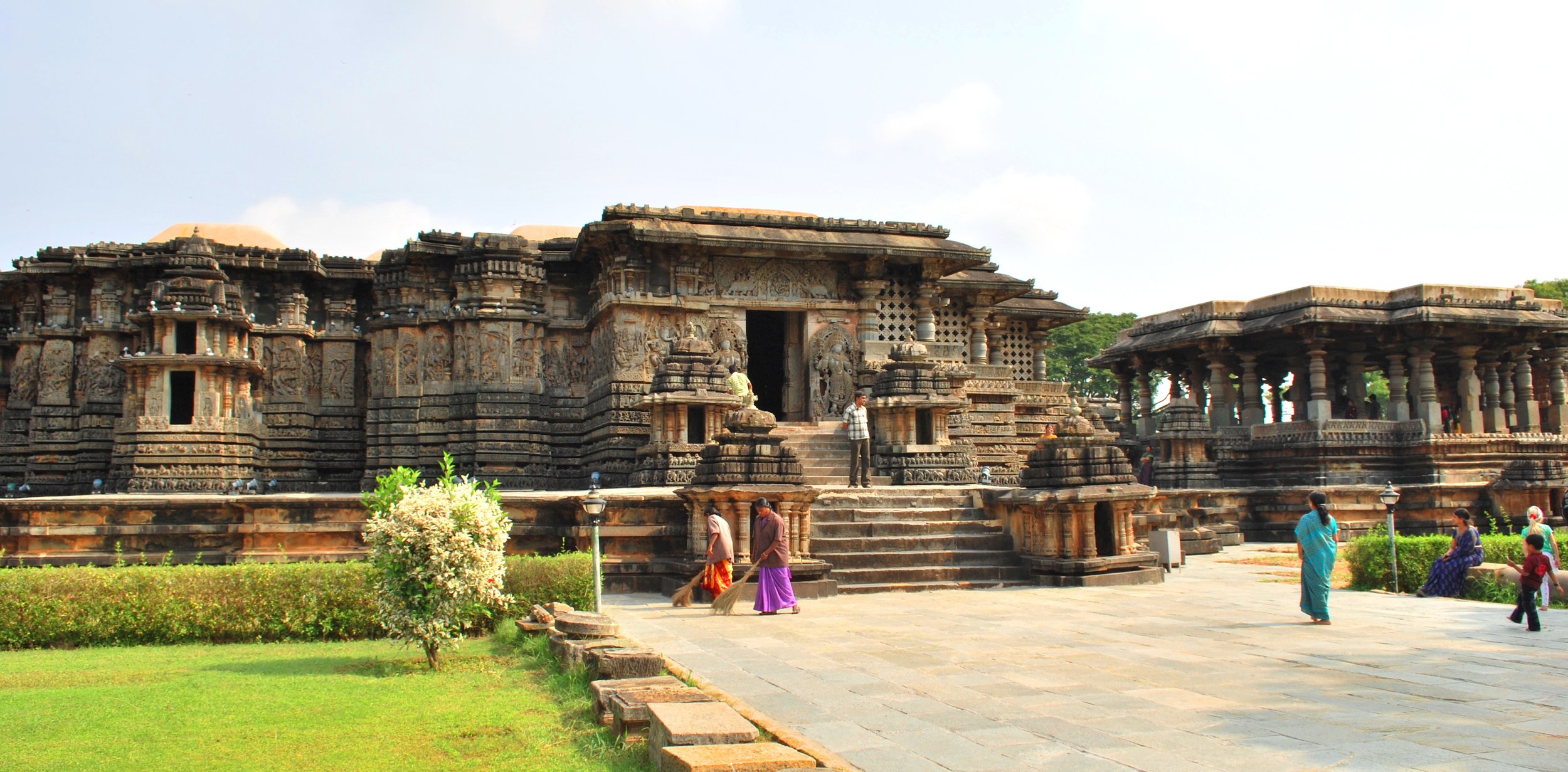
Belur & Halebeedu
2 Nights 3 DaysIntroduction
India's contribution to the spiritual sphere of modern world is unique. From Vedic age, all that is pure and sublime in Nature’s creation have been objects of worship for the Indian. Our history of ancient tradition and culture is interwoven in temple worship and pilgrimage. The lofty Himalayas, the sacred Ganga, the holy Cauvery, the crystal like Tungabhadra have all been cherished pilgrim spots. In South India, temple worship has been a glorious tradition. Over the years, there have been many schools of temple building – the Dravidian, Chalukya, Chola, Pallava, Pandya and the Hoysala. The art made its transition from temporary structures of wood and mortar to more enduring edifices.The temples were constructed according to Agama and Shilpa shastras. These temples were the seat of learning and hub of social and cultural activities.
Day 1: Train Journey to Udupi.
Pick from the hotel at 10:30 am to board our train to Udupi from Goa Margao Railway Station at 13:00 pm, train arrives in Udupi at 18:30 pm (about 5 hours journey). The train journey itself is an experience, with beautiful scenery throughout the journey. You’ll arrive to Udupi and checking in to your hotel.
Day 2: Vidyashankara Temple Sringeri, Chennakeshava Temple Belur, Veeranarayana Temple Belavadi, Hoysaleswara Temple Halebeedu.
Leaving from hotel in the morning (approx 05:30 am) we will travel by Car or Tempo Traveller (1:30 min) to visit Vidyashankara Temple in Sringeri.
Vidyashankara Temple Sringeri which is built in year 1338 A.D around the Samadhi of Vidyathirtha, is a beautiful and interesting temple which bears a slight resemblance to an old Chariot. It combines the general features of Dravidian style with the Vijayanagara style. Standing on a richly sculpted plinth, this temple has six doorways. Twelve pillars surrounding the mandapa with figures of the twelve signs of the zodiac. They are constructed in such an ingenious way that the rays of the sun fall on each pillar in the chronological order of the twelve months of the Hindu calendar. Each column is topped by a Yali with a rolling stone ball in its mouth.
After breakfast in Sringeri town we drive further (2 hrs) through Coffee and Tea Estates of Chikmagalur to visit Chennakeshava Temple in Belur.
Chikmagalur is known as “Coffee Land” of India, the history of coffee is fascinating. Baba Budan an Indian muslim saint sneaked seven coffee beans from Mocha, Yemen in his thick beard while on a pilgrimage to Mecca and planted them on the Chandragiri Hills of Chikmagalur. It was considered forbidden to take a green coffee seed out of Arabia. However, because the number seven is a sacred number in Islam, the saint's act of bringing seven coffee beans was considered a religious deed. Arabs strictly controlled their export to other countries, only allowing them to be shipped roasted or boiled to prevent coffee beans from germinating. The first plantation was developed in 1840 around the Chandragiri Hills, following Baba Budan's first planting of the seeds in 1670 A.D. An adventurous drive through these miles and miles of Coffee estates which is an experience not to be missed.
Chennakeshava Temple which is built in year 1117 A.D with a span of three generations of Hoysala rulers and took 103 years to complete, being an outstanding example of a masterpiece of human creative genius, it was finally complete 1258 A.D. Chennakeshava Temple has been proposed to be recognized as a UNESCO world heritage site. Belur town was a thriving political centre and one of India’s cultural capitals. It was also the capital of the mighty Hoysala Empire, the last great Hindu Empire of South India, which bore the seed of Vijayanagara Empire in its womb.
Later we drive further (20 min) to visit Veeranarayana Temple in Belavadi.
Veeranarayana Temple which is built in year 1200 A.D is one the superb examples where in unique temple plan is executed. The main idol of Sri Veeranarayana in the center facing East, Sri Venugopala facing North and Sri Yoganarasimha facing south. Each of the shrines has a complete superstructure and is one of the largest examples of Hoysala architecture. It is believed that the temple has been constructed in two phases, earlier the central shrine was constructed and later on the additions were made, but truly this temple is a marvel and possesses the most beautiful images of Sri Venugopala as certified by the Archaeological Survey of India.
Next we drive further (15 min) to visit Hoysaleswara Temple in Halebeedu.
The Hoysaleswara temple, constructed in 1121 A.D, is a large Shiva temple built by the Hoysala rulers. The base has 8 rows of carvings featuring elephants, lions, horses, and flowers. The walls display intricate carvings of Hindu gods, animals, and scenes from epics like the Ramayana and Mahabharata. It is known for its elaborate doorways and is considered one of the best at portraying Indian epics. A large Nandi statue sits in front of the temple, adorned with stone ornaments. Inside, there are beautifully carved pillars, especially notable for their polished finish. The temple is being proposed as a UNESCO world heritage site.
We'll take a lunch break and then drive back to the hotel in Udupi, which will take about 3 hours through Charmadi Ghat. This area is famous for its diverse plant and animal life, located in the Western Ghats, a UNESCO World Heritage Site. It's home to many unique and endangered species, including large squirrels, Indian gaurs, birds, and reptiles. The Ghat is an important route connecting towns and villages, supporting local trade and travel.
Day 3: Train Journey to Goa
After breakfast Pick from the hotel at 07:00 am, board our train to Goa from Udupi Railway Station at 07:30 am, arrives Goa at 12:30 pm and drop back to your hotel.









